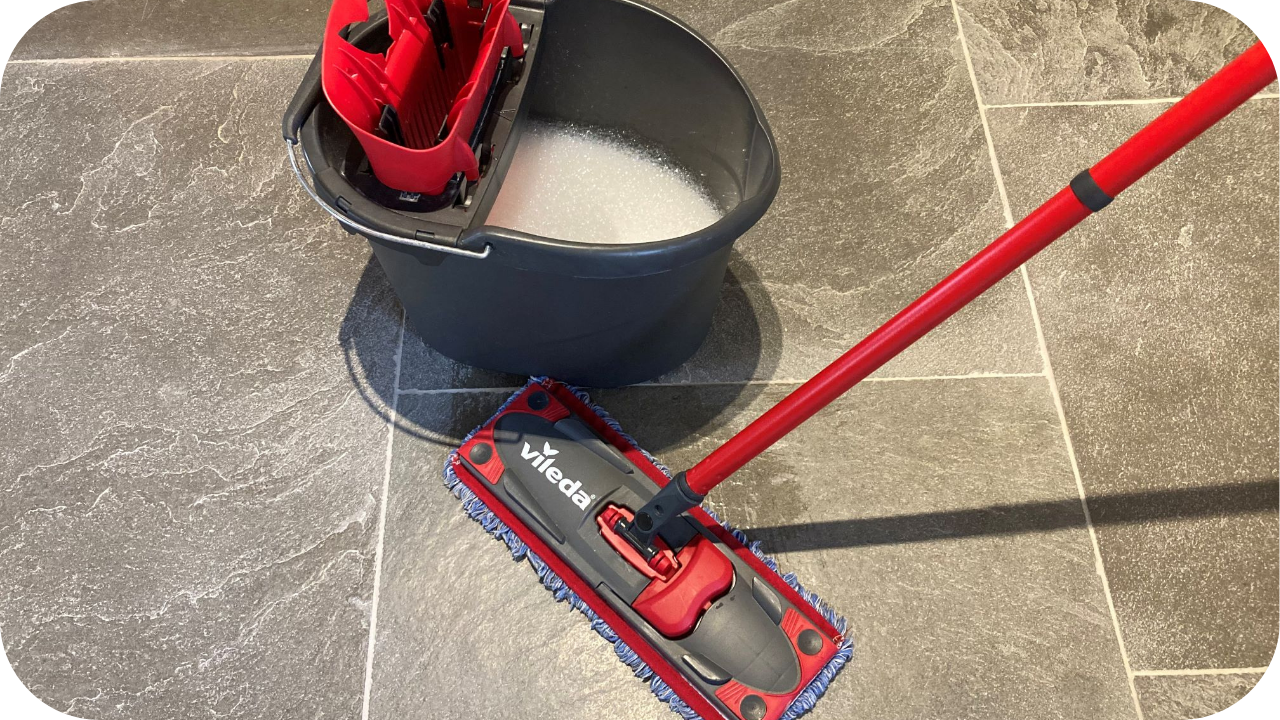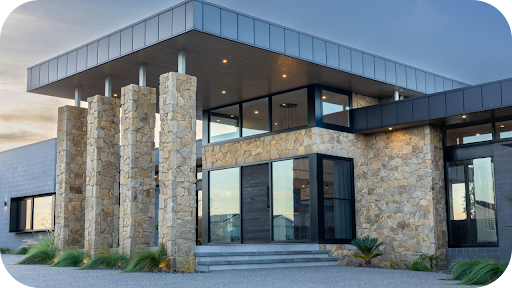
Hardscapes are the backbone of any outdoor space, offering structure, function, and visual appeal. Whether you’ve installed natural stone, concrete pavers, or a blend of materials, ongoing care is essential to keep them looking their best.
Regular maintenance protects your investment, preserves the stone’s finish, and extends its life through seasonal wear and tear.
In this guide, we’ll walk you through the tools, techniques, and expert tips needed to clean and maintain your hardscape. From everyday upkeep to tackling stains, it’s all about doing it right from the start.
Material Matters: A Guide to Hardscape Types
Not all hardscapes are made the same, and understanding your surface material is the first step to proper care. Natural stone, such as bluestone, granite, or travertine, offers timeless beauty but requires gentler, more specific maintenance due to its porosity and sensitivity to harsh chemicals.
Concrete pavers are more uniform and durable, but can show wear over time if not sealed and cleaned regularly. Brick, while charming, is prone to moss and staining in damp areas. Each material responds differently to weather, stains, and foot traffic, making material-specific care essential.
What works on concrete could etch or dull natural stone, and aggressive cleaners may permanently discolour your surface. Knowing what your hardscape is made from will help you choose the right cleaning solutions, tools, and long-term care strategies to keep it looking pristine throughout every season.
Tools and Cleaning Solutions You’ll Need
Using the right tools ensures your hardscape stays clean without risking damage. These essentials offer safe, effective care for everything from light debris to stubborn grime and stains.
- Protective gloves: Essential for safe handling of tools and chemicals. Keeps hands protected from abrasives, cleaners, and sharp debris during maintenance work.
- Stiff-bristle broom: Clears surface debris like leaves, soil, and dust. Regular use prevents staining and helps keep textured stone and joints free from build-up.
- Buckets: Useful for mixing solutions and rinsing tools. Designate separate buckets for clean and dirty water to avoid spreading grime while cleaning.
- Measuring jug or dilution bottle: Helps you mix cleaning solutions accurately according to product directions. Prevents overuse of chemicals and ensures safe application, especially when working with concentrated stone cleaners.
- pH-neutral cleaner: Designed for natural stone. Cleans effectively without harming the surface or reacting with the sealer. Always check for stone-safe certification.
- Soft-bristle brush: Gently removes dirt, moss, and mildew from delicate surfaces. Ideal for natural stone, where harder brushes could scratch or damage the finish.
- Garden hose with spray nozzle: Ideal for rinsing surfaces post-cleaning. A controlled spray removes loosened dirt without disturbing jointing sand or stone placement.
- Pressure washer: Effective for deep cleaning on durable surfaces. Use correct PSI to lift grime and algae without etching or cracking stone or pavers.
Regular Cleaning Techniques for a Spotless Finish
A clean hardscape is about more than looks. These simple techniques remove buildup, prevent staining, and protect your surfaces through changing seasons and daily foot traffic.
1. Sweep regularly to remove surface debris
Frequent sweeping prevents leaves, dirt, and grit from breaking down and staining your hardscape. It also helps preserve the integrity of joints by stopping fine particles from settling between the stones or pavers.
2. Rinse with a controlled water flow
Using a garden hose with a spray nozzle allows you to rinse away loose debris without disturbing jointing sand or compacted material. Rinsing is best done after sweeping or post-scrubbing for a clean finish.
3. Pressure wash with care
Use pressure washers only on sealed or non-porous surfaces. Keep PSI low and maintain distance to avoid damaging the stone’s surface. Always test a small hidden area before cleaning wide sections.
4. Scrub with the right tools
A soft-bristle brush paired with a pH-neutral cleaner is ideal for delicate surfaces like natural stone. This method removes grime, algae, and organic buildup without stripping away sealers or altering the stone’s finish.
5. Dry the surface when needed
After cleaning, allow hardscape surfaces to dry fully, especially before sealing or applying treatments. Proper drying prevents water spots, avoids slipping hazards, and helps you assess if further cleaning or spot treatment is needed.
Tackling Common Stains and Blemishes
Stains are inevitable in outdoor spaces. Knowing how to treat stains quickly and correctly can save your hardscape from lasting damage or costly restoration work down the track.
1. Organic stains (leaves, moss, algae)
Organic stains occur from decaying leaves, moss, or algae. Remove using a pH-neutral cleaner or diluted vinegar with a soft brush. Prevent regrowth by sweeping regularly and improving sun exposure in shaded zones.
2. Oil and grease stains
Oil and grease often build up in BBQ areas and driveways. Blot spills early, then use an absorbent powder. Follow with a stone-safe degreaser and rinse thoroughly to prevent permanent dark patches.
3. Rust and mineral deposits
Rust marks and efflorescence should be treated with specialty stone-safe removers. Avoid acidic products. For stubborn deposits, consult a professional to prevent surface etching or discolouration on natural stone and pavers.
4. Food and drink stains
Food and drink spills, like wine or sauces, can soak into porous surfaces. Blot immediately and scrub gently with warm soapy water or a pH-neutral cleaner approved for use on natural stone.
5. Paint and sealant overspray
Paint splashes or leftover sealant can be removed with a plastic scraper and solvent approved for stone. Always test a small spot first to avoid damaging the surface or existing sealer.
When and How to Seal Your Outdoor Surfaces
Sealing your hardscape is one of the most effective ways to protect it from stains, moisture, and weather-related wear. Natural stone and pavers both benefit from sealing, particularly in high-traffic areas or regions with frequent rainfall.
A quality sealer acts as a barrier, reducing water absorption, enhancing colour, and making future cleaning easier. There are two main types of sealers: penetrating sealers, which absorb into the stone and preserve a natural look, and topical sealers, which sit on the surface and offer a glossier finish. The choice depends on the material, location, and desired aesthetic.
Sealing should be done only when the surface is clean and completely dry, ideally in mild weather conditions. As a general guide, resealing is recommended every two to five years depending on usage and climate.
Applying the correct sealer with proper technique ensures long-term protection, better durability, and a consistently beautiful hardscape finish throughout the seasons.
Seasonal Hardscape Maintenance Tips
Your hardscape faces different challenges throughout the year. Adjusting your care routine to suit each season keeps your stone surfaces strong, clean, and looking their best all year round.
1. Autumn
Falling leaves break down and leave organic stains if not removed regularly. Sweep frequently, clear debris from joints, and check for signs of water build-up. It’s also the right time to prepare surfaces for the wet months ahead.
2. Winter
Cold weather combined with rain can lead to water pooling and frost damage, especially on unsealed or porous stone. Avoid salt-based de-icers, keep surfaces clear of ice and debris, and inspect drainage systems to prevent freeze-related expansion or cracks.
3. Spring
Use spring’s dry, mild weather to deep clean your hardscape. Refill washed-out joints, scrub off algae or moss, and inspect stones for movement caused by winter ground shifts. Resealing is best done in spring when surfaces are fully dry.
4. Summer
Summer heat and increased foot traffic can stress even well-maintained surfaces. Rinse regularly to prevent dirt build-up, inspect for UV wear, and top up sealer where fading occurs. Address loose stones early to avoid accidents or further deterioration.
Preventative Maintenance for Long-Term Beauty
Prevention is always better than repair. These proactive habits protect your hardscape from early deterioration and help maintain a fresh, polished look all year long.
- Install proper drainage systems: Standing water weakens stone over time and encourages moss, mould, and algae growth. Ensure water flows away from paved areas by grading surfaces correctly or installing trench drains to direct runoff effectively.
- Use jointing sand or stone-safe grouts: Filling joints with stabilised sand or appropriate grouts helps reduce weed growth and surface shifting. These materials keep pavers tightly locked in place and prevent erosion between stones during heavy rains or pressure cleaning.
- Address water pooling and shifting early: Uneven surfaces and low spots trap water, which leads to staining, weed growth, or frost damage. Level sunken areas promptly and reinforce base layers to preserve the structure and safety of your hardscape.
- Create a maintenance calendar: Regular care prevents major damage. Set reminders to sweep, inspect joints, rinse, and reseal when needed. This routine approach protects the appearance and durability of your stonework across all seasons.
- Protect high-traffic zones with mats or paver sealers: Entryways, BBQ zones, and pool surrounds face constant wear. Use protective mats or apply an extra coat of sealer in these areas to shield the stone from grease, dirt, and heavy foot traffic.
When to Call a Professional
While regular cleaning and maintenance can be done yourself, certain situations benefit from professional expertise. Deep stains like rust, oil, or mineral deposits often require specialised treatment to avoid damaging the surface or affecting the stone’s finish.
Regrouting, resetting loose pavers, and restoring uneven surfaces also demand proper tools and knowledge to achieve lasting results. Incorrect use of pressure washers or harsh chemicals can cause more harm than good, especially on sensitive natural stone.
A professional can assess the condition of your hardscape, recommend the safest and most effective methods, and carry out precise repairs that preserve the integrity of the surface.
Whether you’re dealing with structural issues, embedded staining, or long-term wear, calling in a professional ensures your hardscape remains both beautiful and safe for years to come.
Conclusion
Maintaining your hardscape ensures it remains both functional and visually appealing for years to come. With the right approach, your stonework will stand the test of time.
For high-quality natural stone products that elevate outdoor spaces, visit Splendour in Stone. Our expert team can guide you in selecting the perfect materials for lasting beauty and performance.
More To Explore

Grey Granite Cobblestones for Driveways: Strength and Style
Grey granite cobblestones combine strength, safety, and timeless appeal, making them a popular choice for Melbourne driveways and outdoor spaces. Their natural flamed texture offers

Granite Wall Cladding Melbourne: Modern and Classic Appeal
Granite wall cladding brings both modern sophistication and classic charm to Melbourne architecture. Known for its durability and natural beauty, granite transforms façades, feature walls,


